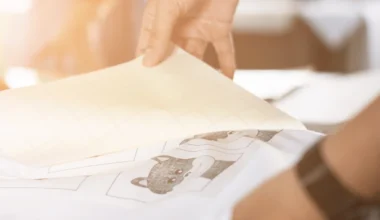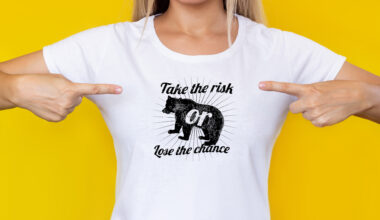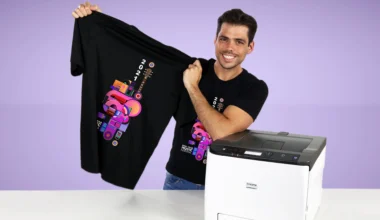When it comes to printing your custom designs on apparel, there are 2 main printing types that you’ve probably come across: Direct-to-garment (DTG) printing and sublimation printing.
You might know that each has some key differences, but might still be trying to figure out the best one for your business. Let’s explore the DTG vs sublimation comparison, so you can see which one might be for you!
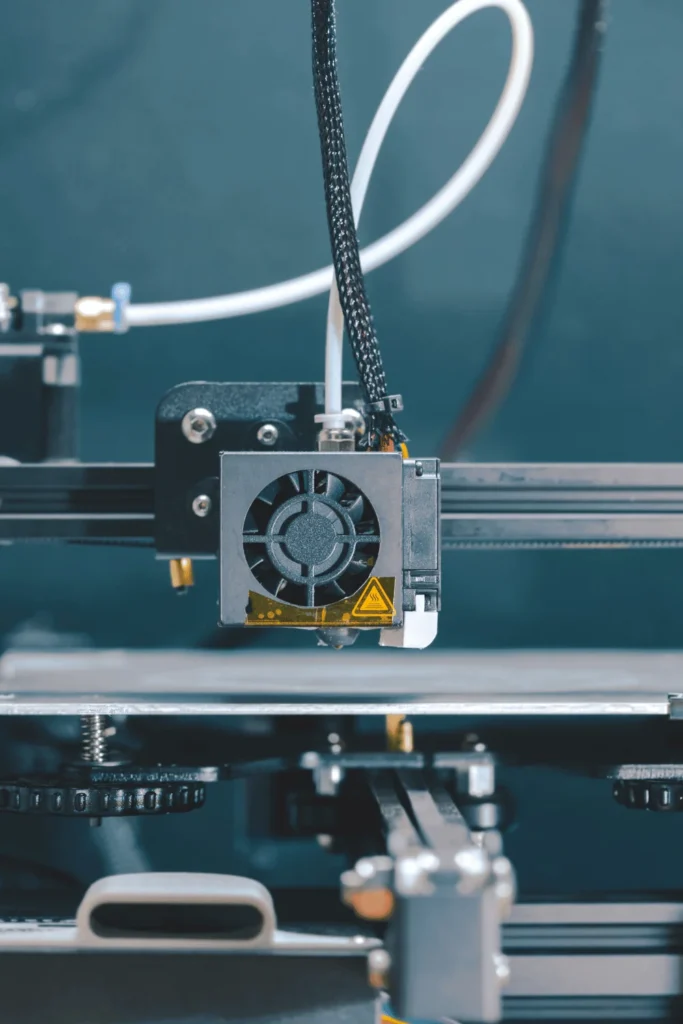
What is DTG Printing?
DTG printing, or direct-to-garment printing, is a method that uses specialized inkjet technology to print directly onto fabrics. Unlike traditional printing methods, DTG printers can print full-color designs in a single pass. This makes DTG vs sublimation ideal for smaller runs and designs with intricate details or multiple colors.
In DTG printing, the ink is applied directly to the garment’s fabric, which allows for a soft feel and a high level of detail. This method is often used for printing custom t-shirts, hoodies, and other apparel items where a vibrant, detailed design is desired.
Plus, DTG vs dye sublimation is more environmentally friendly compared to traditional printing methods, as it produces less waste and uses water-based inks!
The Pros
- High-quality prints: One of the main advantages of DTG printing vs sublimation is its ability to produce high-quality prints with intricate details and vibrant colors. This makes it ideal for designs that require a high level of detail and color accuracy.
- Easy to use: The pre-treatment method and printing method are fairly simple with DTG, making it a great option for beginners who are interested in on-demand printing.
- Versatility: DTG printing is highly versatile and can be used to print on a wide range of fabrics, including cotton, polyester, and blends. This makes it suitable for a variety of applications, from printing t-shirts and hoodies to creating custom apparel for events and promotions.
- Full-color printing: DTG printing allows for full-color printing, which means you can reproduce complex designs with multiple colors accurately. This makes it ideal for printing detailed artwork, photographs, and graphics.
- Prints on-demand: Unlike heat transfer, sublimation, and HTV, DTG printers don’t require additional setup for each design since it is printed directly on the garment rather than transferred onto it. You can program the DTG printer to queue up multiple designs and then simply change the garment between each print.
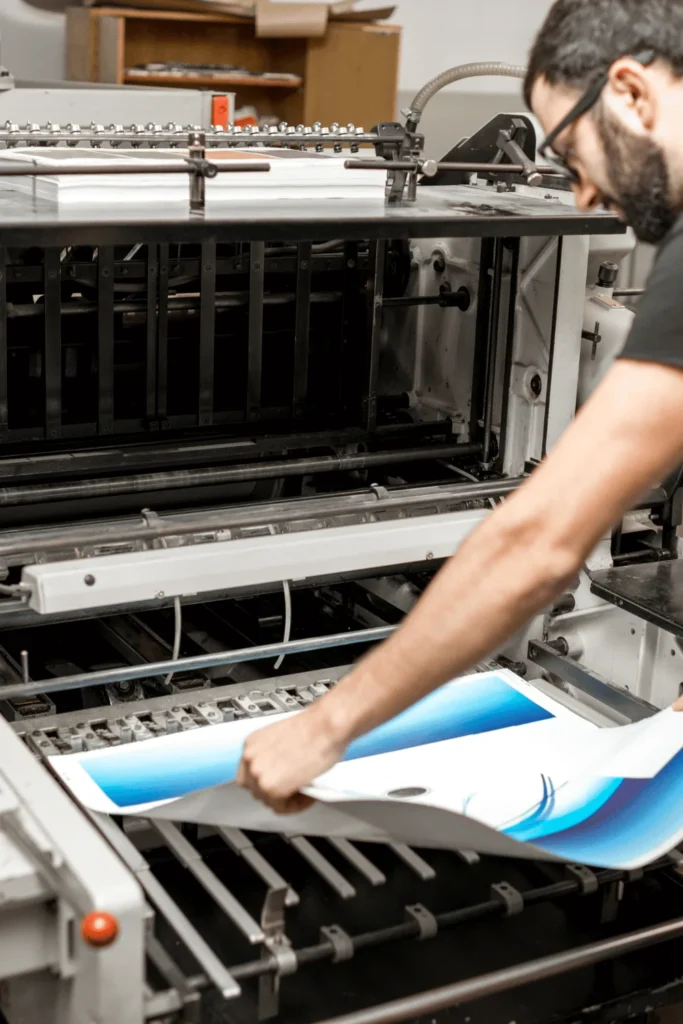
The Cons
- Fabric limitations: DTG printing works best on 100% cotton or high-cotton blend fabrics. It may not be suitable for printing on certain synthetic fabrics or materials with special coatings.
- Pre-treatment requirement: Some fabrics require pre-treatment before printing to ensure that the ink adheres properly. This additional step can add to the overall production time and cost.
- Slower for larger orders: DTG printing can be slower for larger orders compared to other printing methods, as each garment needs to be printed individually. This can lead to longer turnaround times for large orders.
- Higher cost for larger orders: Due to its slower nature, DTG printing can be more expensive for larger orders compared to other printing methods. Businesses printing large quantities may find that other printing methods are more cost-effective for bulk orders.
What DTG Printing is Best For
- Intricate designs: DTG printing is great for designs that require a high level of detail, such as photographs, illustrations, or complex graphics. The inkjet technology used in DTG printing allows for precise printing of intricate details.
- Designs with lots of colors: DTG printing is suitable for designs with many colors, as it allows for full-color printing. This means you can reproduce complex designs with multiple colors accurately and vibrantly.
What is Sublimation?
Sublimation printing is a printing method that involves transferring dye onto a material using heat and pressure.
When comparing sublimation printing vs DTG, sublimation printing allows the dye to penetrate the fibers of the material, resulting in vibrant, long-lasting prints.
Sublimation printing is ideal for polyester fabrics and hard surfaces like mugs and phone cases. The process of sublimation involves using heat to turn the dye into a gas, which then bonds with the fibers of the material. This results in prints that are durable and resistant to fading, cracking, or peeling.

The Pros
- Durable prints: Sublimation vs DTG results in prints that are durable and long-lasting. The prints won’t crack, peel, or fade over time, making them ideal for products that will be used frequently or washed regularly.
- Full-color printing: Sublimation printing allows for full-color printing with no additional setup costs for multiple colors. This means you can reproduce complex designs with multiple colors accurately and vibrantly.
- No texture: Unlike some other printing methods, sublimation printing does not leave a texture on the surface of the material. This means you can achieve a smooth, professional-looking finish on your printed products.
The Cons
- Limited to polyester: One of the main limitations of dye sublimation vs DTG is that it only works on polyester fabrics and items with a special coating. This limits its application to certain types of materials.
What Sublimation Is Best For
- Promotional products: Sublimation printing is popular for printing promotional products, such as mugs, phone cases, and keychains. The durable prints and full-color capabilities make it a versatile option for promotional items.
- Personalized gifts: Sublimation printing is ideal for creating personalized gifts, such as custom mugs, shirts, and photo frames. The durable prints and full-color capabilities make it a popular choice for creating unique and memorable gifts.
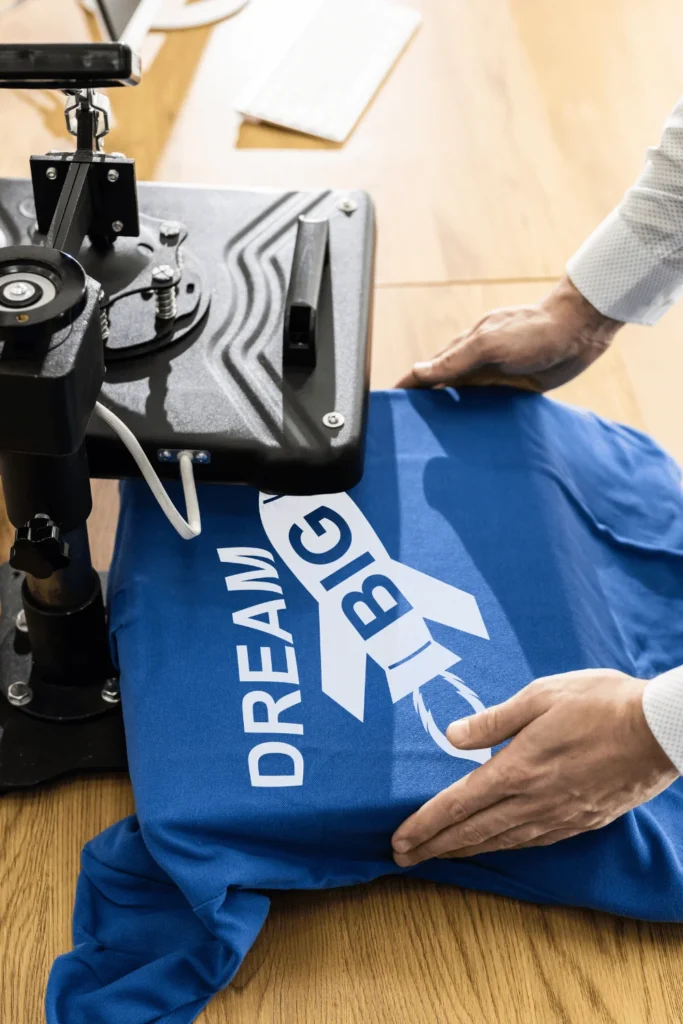
DTG vs Sublimation: How to Choose the Right Printing Method for You
Embarking on the great battle of DTG vs sublimation depends on a few different factors:
- Type of fabric or material: If you’re printing on 100% cotton or high-cotton blend fabrics, DTG printing may be the better choice. However, if you’re working with polyester fabrics or hard surfaces like mugs and phone cases, sublimation printing is more suitable.
- Complexity of the design: For intricate designs with many colors, DTG printing is ideal. It offers high-quality, detailed prints with vibrant colors. On the other hand, if your design requires full-color printing and durability, sublimation printing is the way to go.
- Quantity of items needed: DTG printing is great for small batch orders, as it does not require a minimum order quantity. However, if you’re printing a large quantity of items, sublimation printing may be more cost-effective in the long run.
Explore Ricoma’s Printers to Streamline Your Creations!
Ricoma offers a range of printers suitable for various printing needs, with options for both DTG and sublimation printing. Whether you’re looking to print custom apparel, promotional products, or personalized gifts, explore our printers to help you bring your ideas to life!

